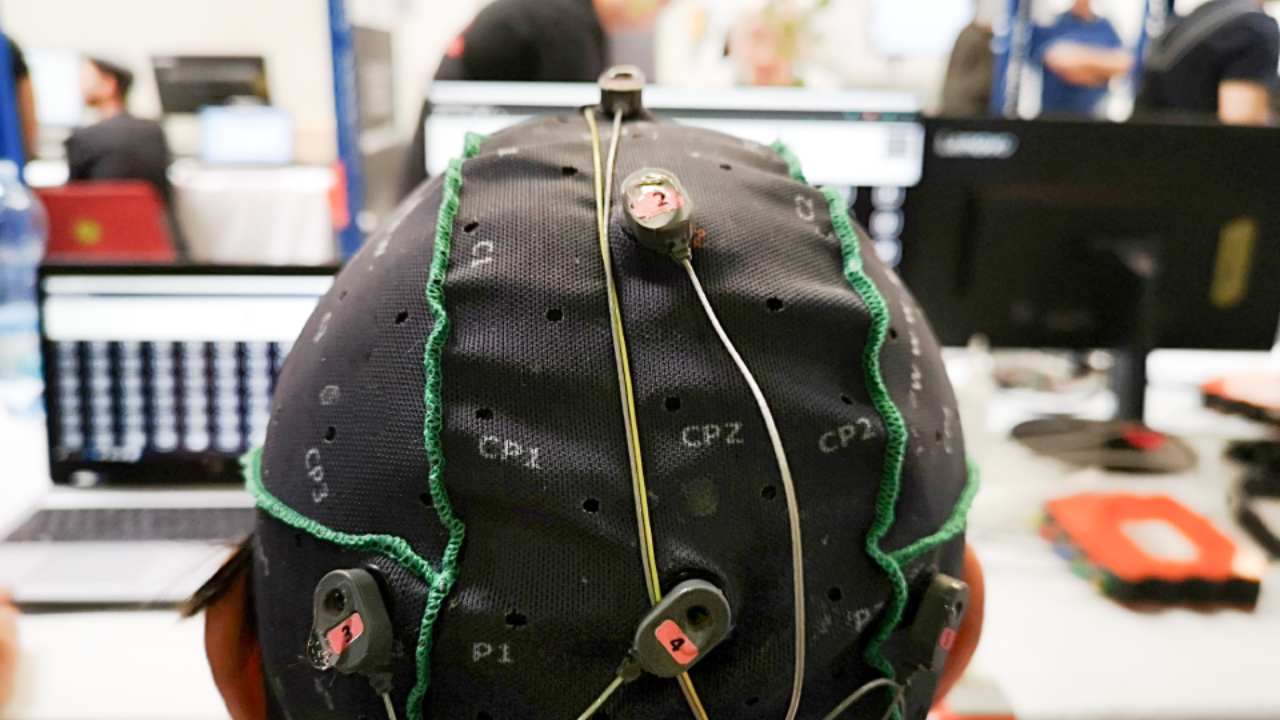
Imagine a future where shining a gentle light on your forehead could help protect your brain from dementia. At Baycrest, that future is beginning to take shape.
Dr. Jean Chen, a world-leading neuroscientist and Canada Research Chair in Neuroimaging of Aging, is exploring how light itself can support brain health. Her work focuses on photobiomodulation (PBM) — a promising, non-invasive therapy that uses near-infrared light to energize brain cells, reduce inflammation, and improve blood flow. The goal? To develop safe, personalized, at-home treatments that could keep the brain healthy and active for longer.
What Is Photobiomodulation (PBM)?
PBM uses gentle red or near-infrared light to stimulate brain activity. Researchers believe this light can help brain cells work more efficiently and improve blood flow, benefits that may protect against conditions like Alzheimer’s disease, depression, and other brain disorders.
What Dr. Chen’s Latest Study Reveals
For years, scientists have been exploring the potential of photobiomodulation (PBM)—a form of light therapy that may enhance brain health. Yet one question remains critical: how does light actually travel through the head, and how might those effects differ from person to person?
Dr. Chen’s recent 2025 study takes a groundbreaking step toward answering that question—especially when it comes to making sure this therapy benefits all people, regardless of skin tone.
How the Study Worked
Using advanced computer models, Dr. Chen’s team simulated how light passes through different layers of the head—skin, skull, and brain tissue—to see how much light actually reaches the brain. They tested two main delivery methods:
Through the forehead (transcranial PBM)
Through the nose (intranasal PBM)
Each method was tested across:
Three light wavelengths: 670, 810, and 1064 nanometers (ranging from red to near-infrared)
Three skin tones: light, medium, and dark
The goal was simple but vital—to understand how both wavelength and skin tone affect light penetration and the resulting brain response.
What They Found
The simulations revealed that only a fraction of light reaches the brain—about 15% through the forehead and 1% through the nose—but that’s still enough to stimulate brain regions linked to memory, focus, and emotional regulation.
Importantly, the study found:
Skin tone matters. Lighter skin allows more light to pass through, while darker skin absorbs more of it.
Wavelength matters. For forehead-based treatments, 810 nanometers worked best; for intranasal delivery, 1064 nanometers was most effective.
Intensity and skin tone interact. Brighter light increases penetration overall, but differences by skin tone remain significant.
This marks the first time skin tone has been formally considered as part of brain light therapy dosing—an essential milestone in equitable neuroscience.
Why This Matters: Building Equity Into Innovation
This research goes far beyond fine-tuning light therapy. It’s about ensuring the science behind future dementia treatments is equitable and inclusive from the start.
When medical research overlooks differences like skin tone, it risks creating therapies that work better for some people than others. Dr. Chen’s work actively challenges that inequity by designing light-based treatments that reflect the diversity of real human biology.
By testing PBM on multiple skin tones, her team is helping ensure that future brain health therapies work safely and effectively for everyone, not just for those whose skin allows more light penetration. This approach represents a new gold standard in scientific fairness—where innovation and inclusion go hand in hand.
Bringing Brain Therapy Home
The ultimate goal of Dr. Chen’s work is to make PBM safe, effective, and accessible outside of clinical settings. Because PBM devices are portable and non-invasive, they could one day become as common as a blood pressure monitor or hearing aid—tools for everyday brain wellness.
Her studies also pave the way for Health Canada approval of consumer PBM devices, ensuring these products are both evidence-based and held to the highest safety standards.
A Brighter, More Inclusive Future for Brain Health
Light therapy may sound futuristic, but Dr. Chen’s research is turning it into a scientifically validated, equitable tool for brain health. By understanding how light interacts with different skin tones—and designing treatments that serve everyone—Baycrest is helping to build a future where dementia prevention is not only possible but fair and inclusive.
As Dr. Chen continues her research, one truth shines through: the path to protecting our minds may depend as much on the light we shine as on the equity we build into it.
Related Articles: Brain Matters, neuromodulation, Research









